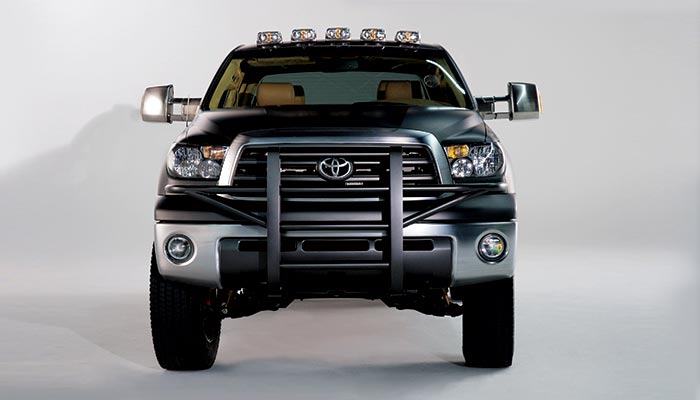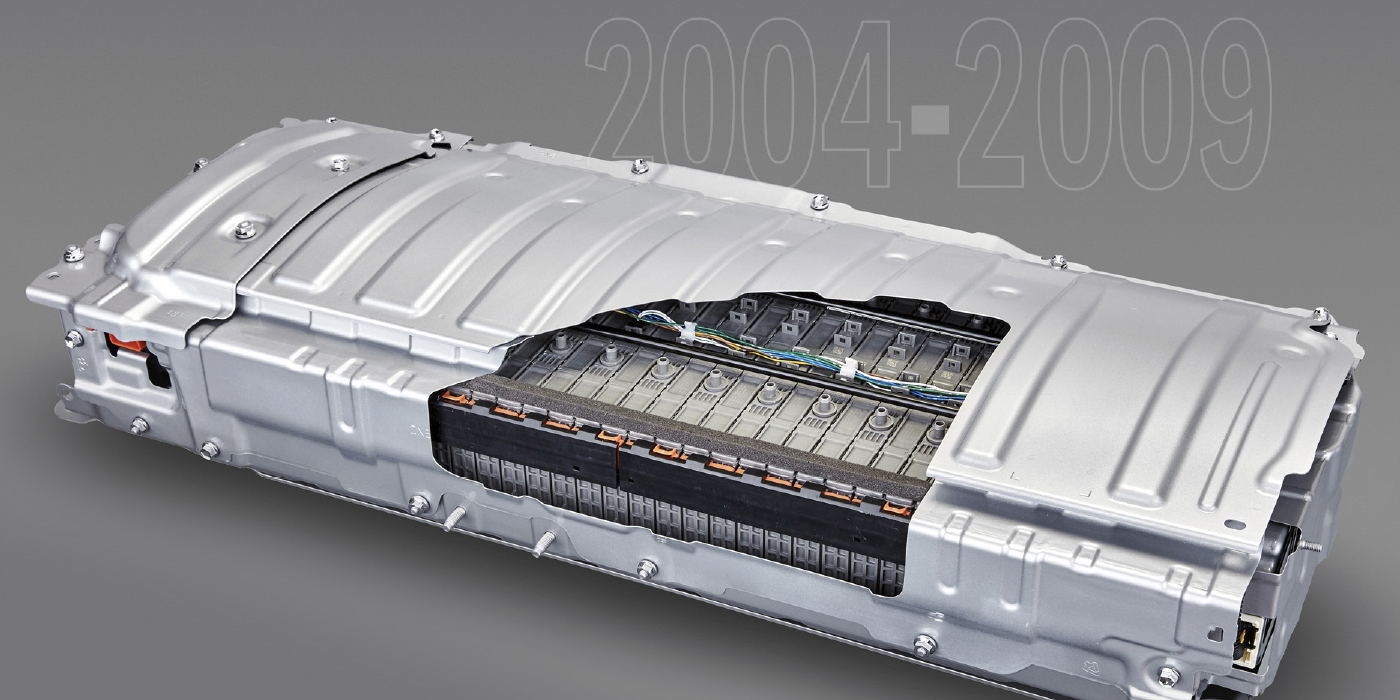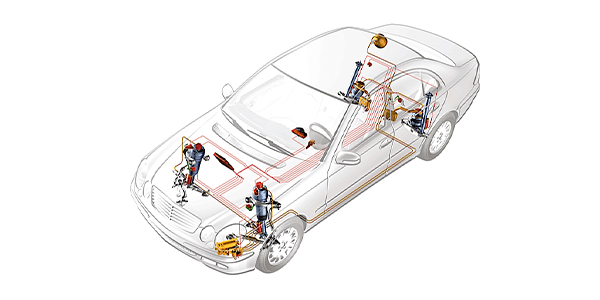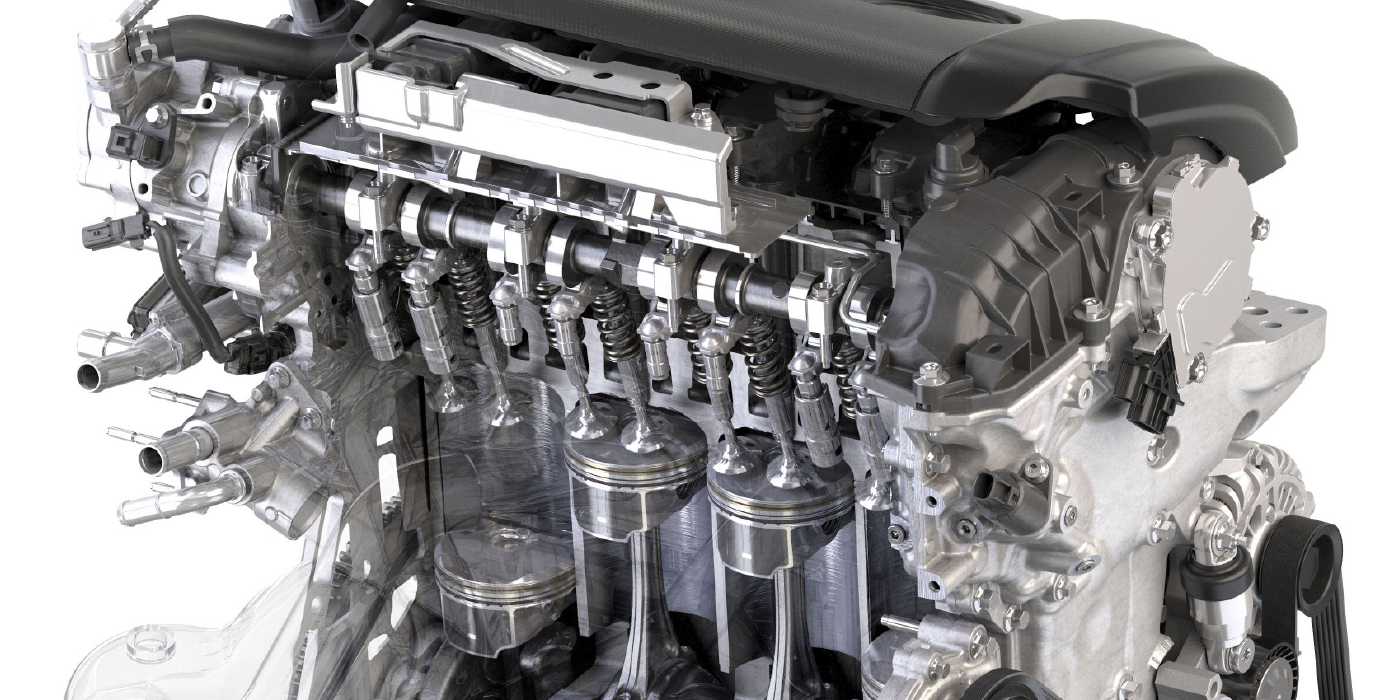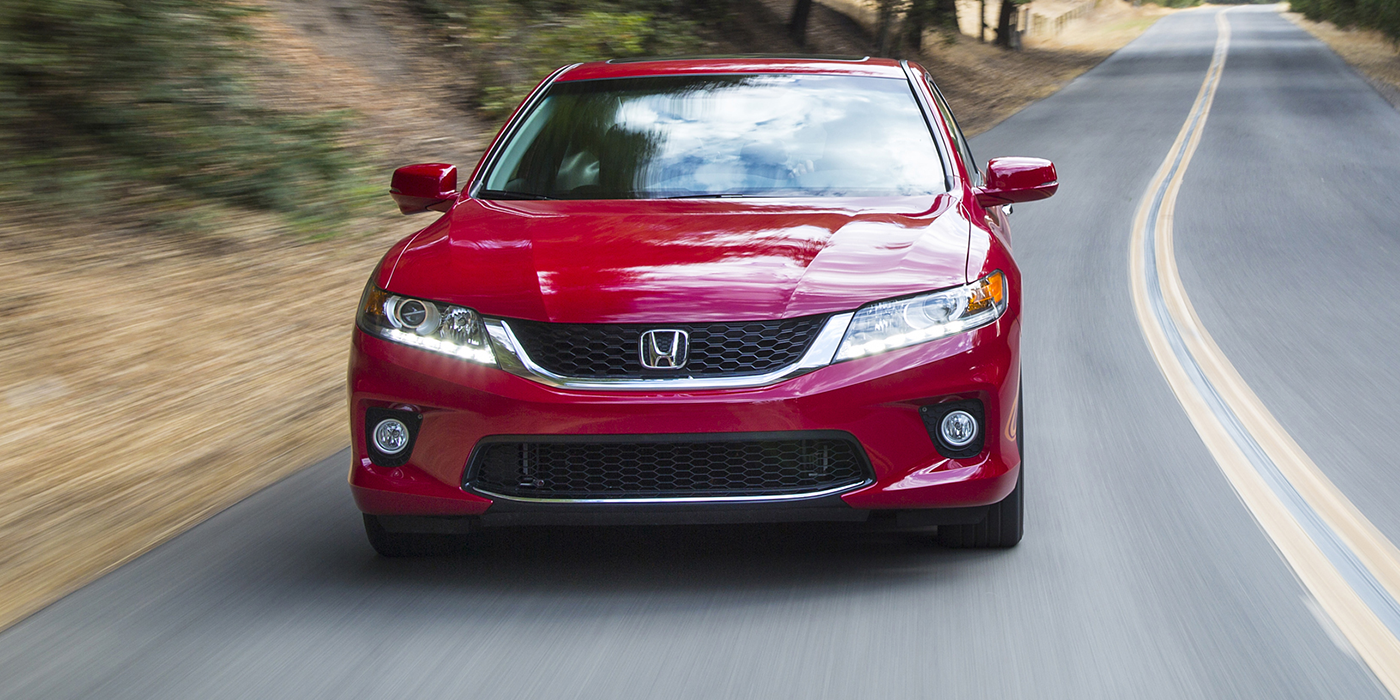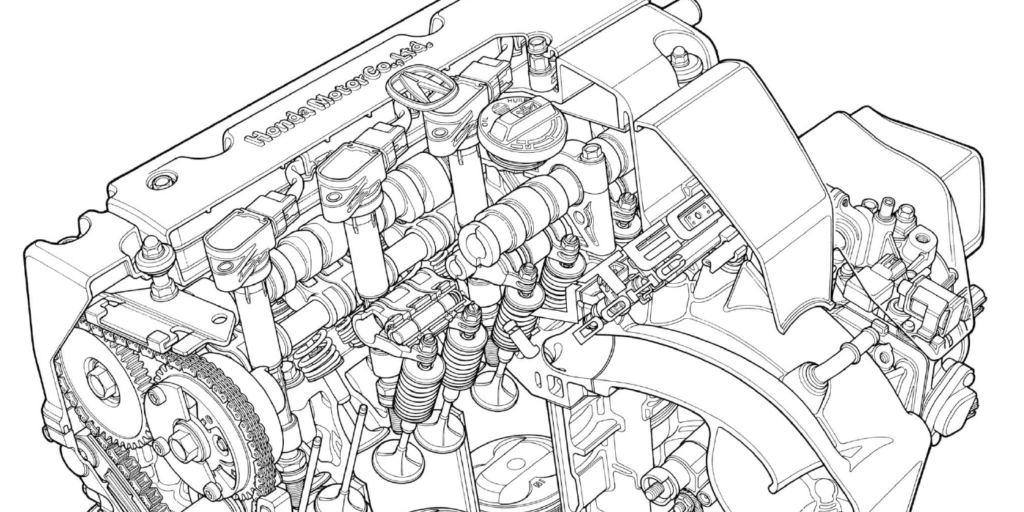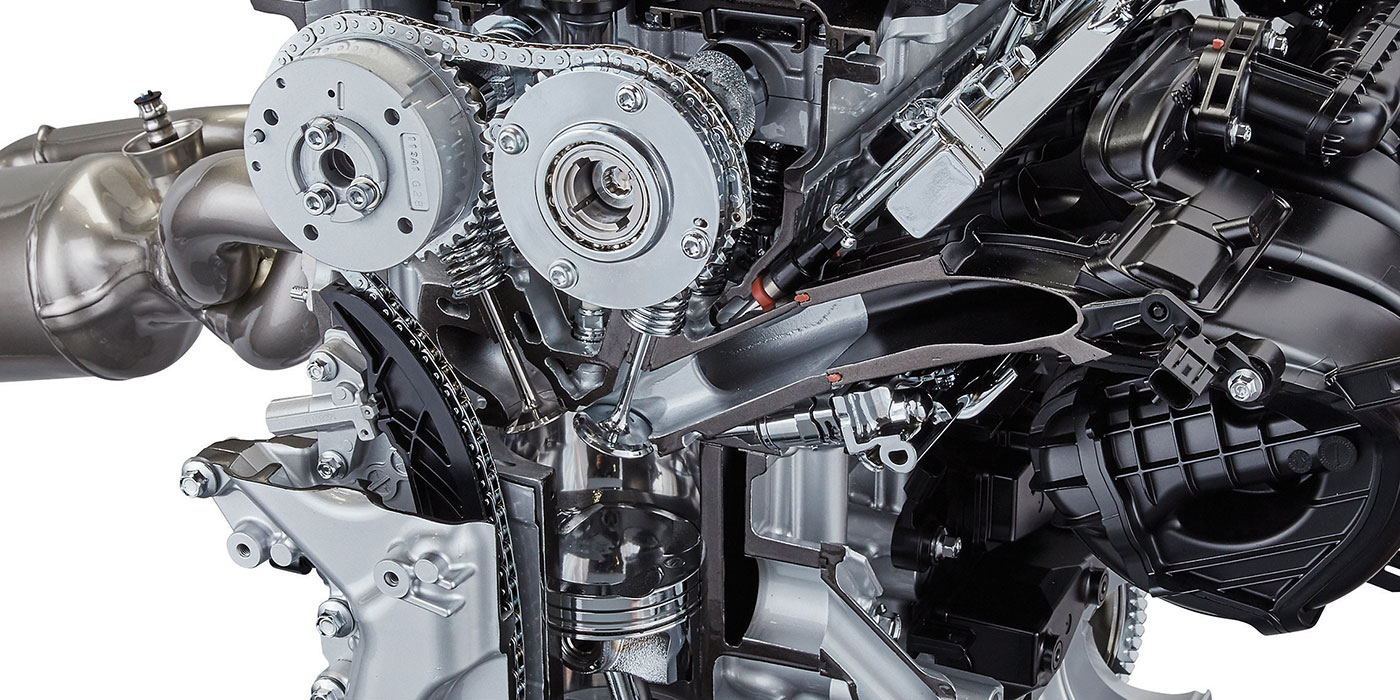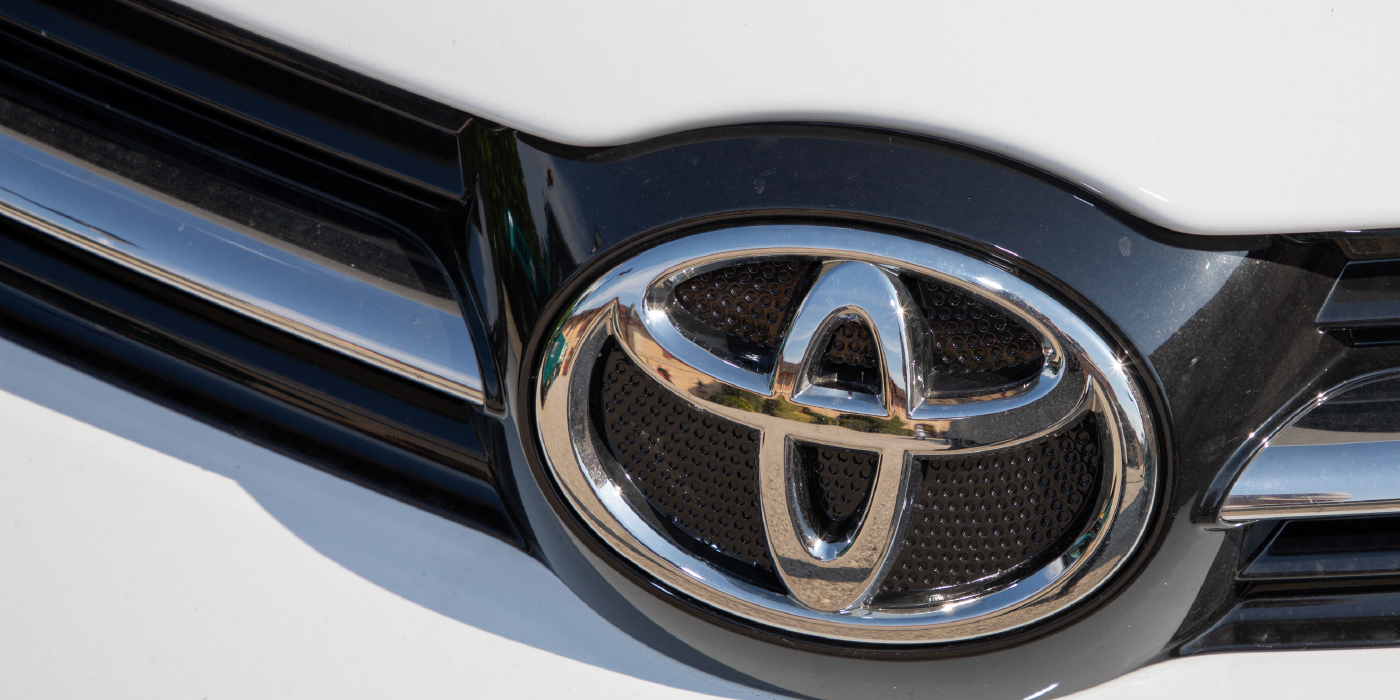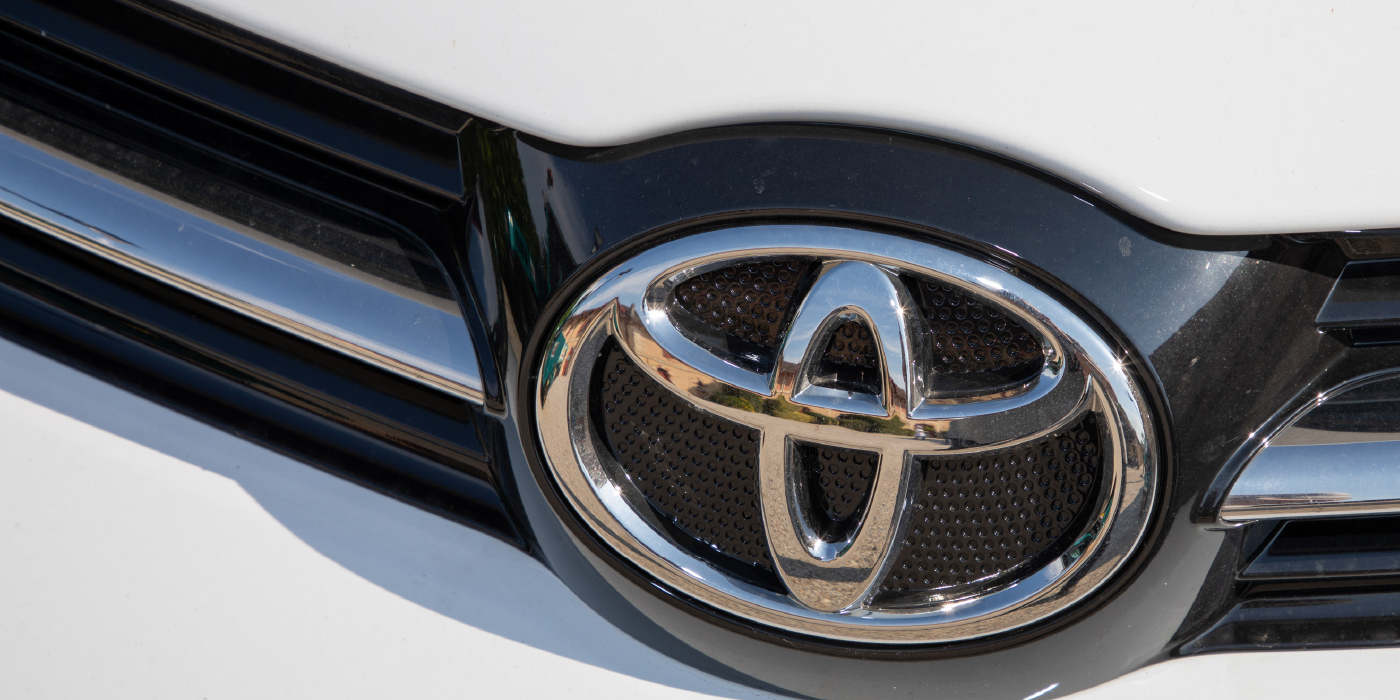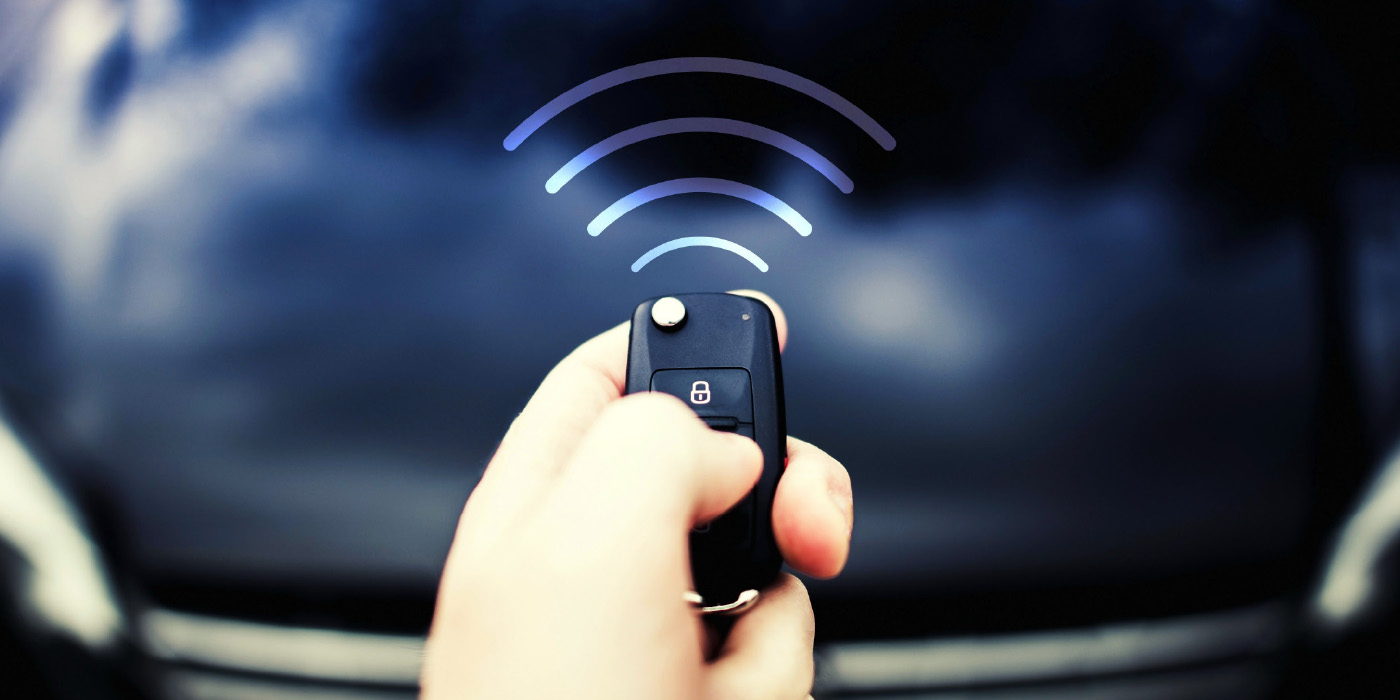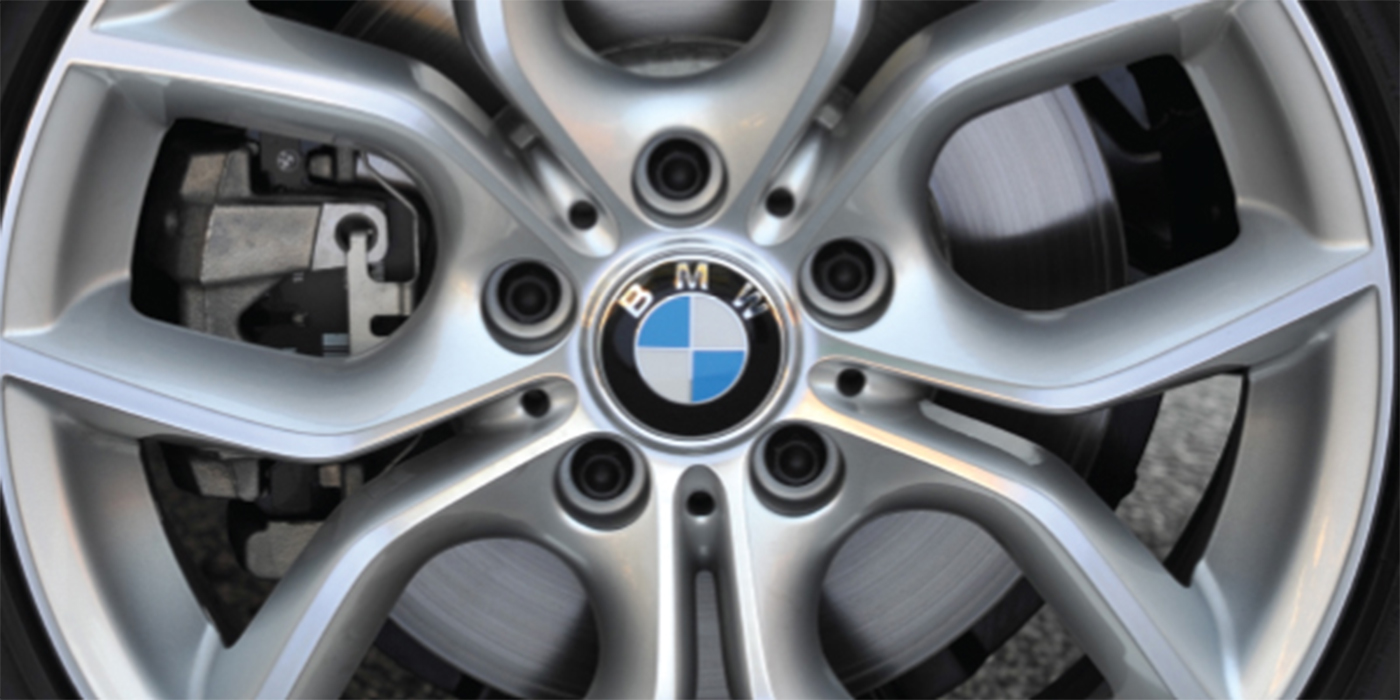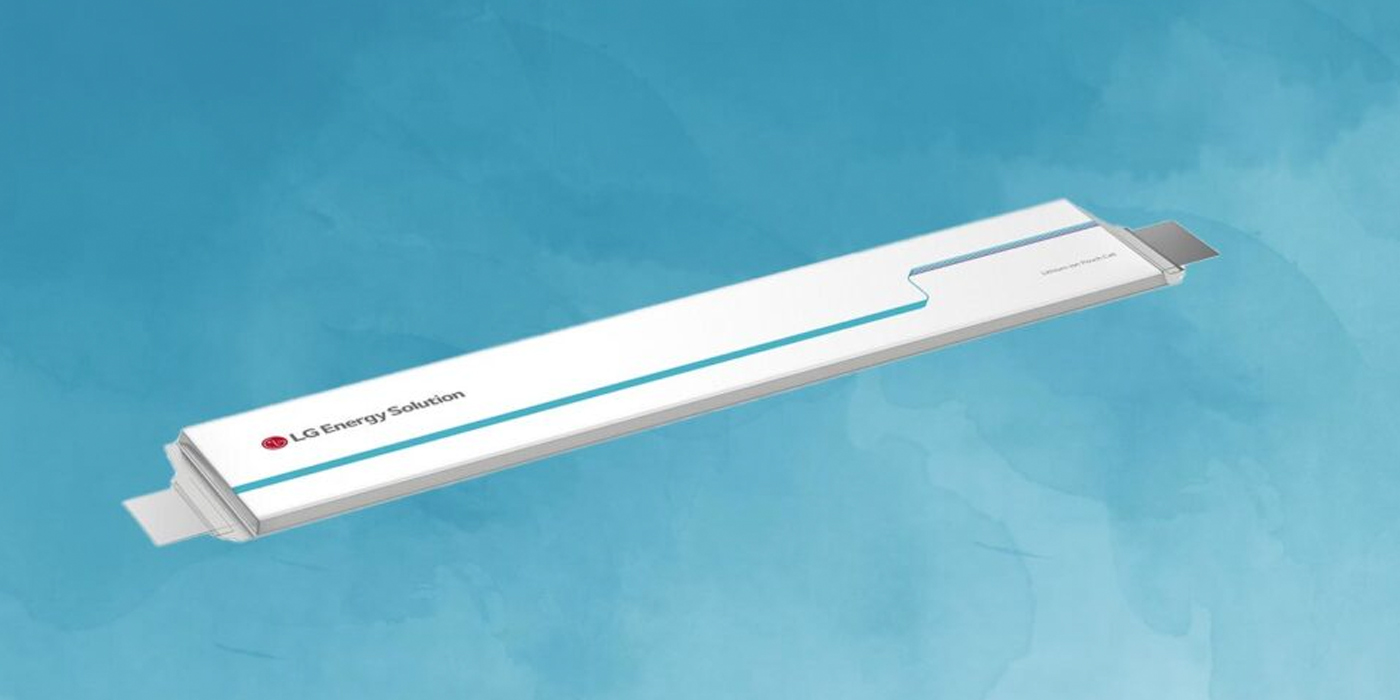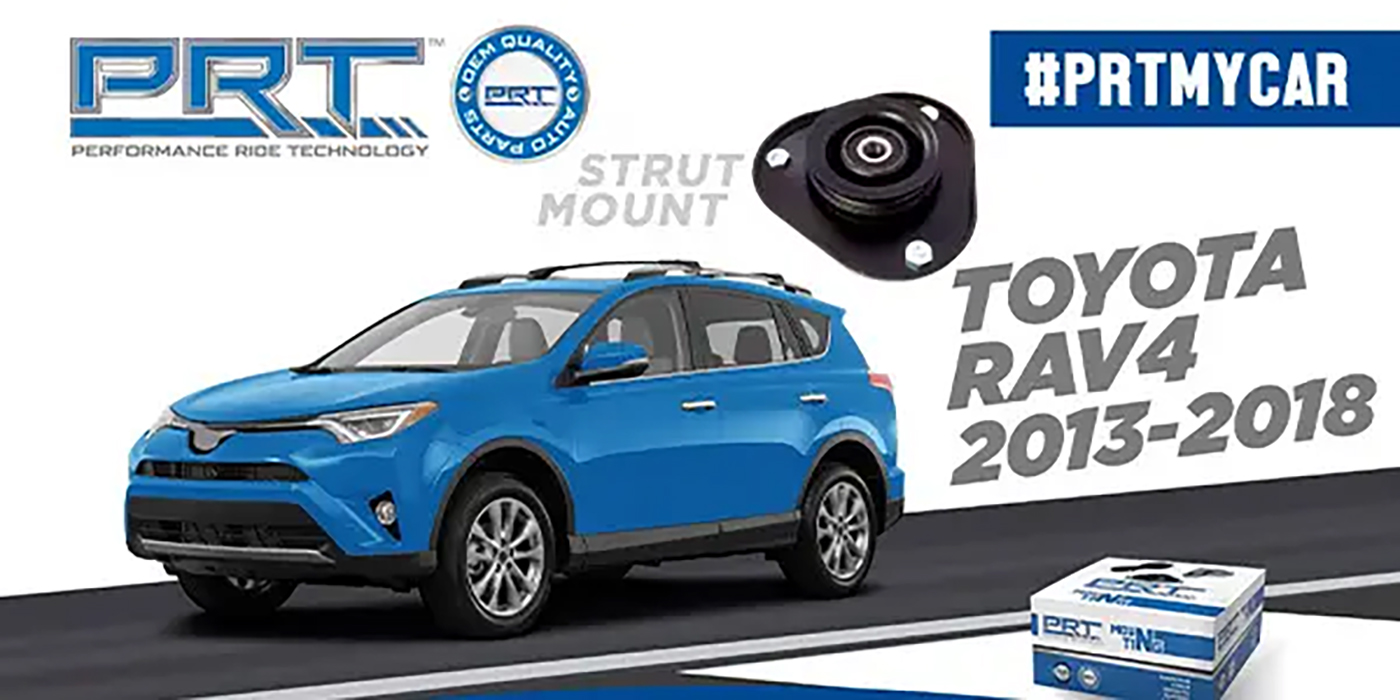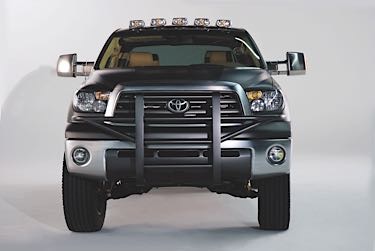 For 2007, the Toyota Tundra was redesigned. The body changed, and the foundation brake system was also updated with larger front brake calipers and rear disc brakes. The control system and hydraulics changed with a new vehicle stability system that included yaw, steering angle and brake pedal load sensors.
For 2007, the Toyota Tundra was redesigned. The body changed, and the foundation brake system was also updated with larger front brake calipers and rear disc brakes. The control system and hydraulics changed with a new vehicle stability system that included yaw, steering angle and brake pedal load sensors.
Overall, this is one of the easier brake jobs. Changing the front brake pads does not require the application of lubricants. The rear brakes are a lot easier to service when compared to the previous models.
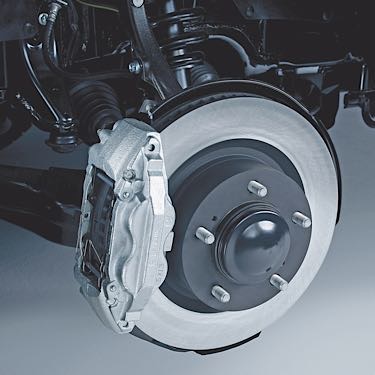 Front Brakes
Front Brakes
The front brakes use the typical Toyota truck four-piston caliper found on the previous generation. The pads are held in with pins that have an anti-rattle clip on the lower pin and a pin holder clip. These items should not be reused when replacing the pads. A quality pad set will include these in the box.
Toyota has designated the bolts that hold the caliper to the knuckle as non-reusable parts. Replacement bolts are readily available. Some remanufactured calipers include new bolts.
When removing the pads or pushing back the pistons, use the correct tool. A brake pad spreader can not only save time, but also prevent damage to the piston boots.
The OE friction formulation on the Tundra is ceramic. A replacement brake pad should be of a similar formulation.
The original pads on the Tundra come with shims. Do not lubricate the back of the pad with any lubricant. The lubricant will only transfer onto the piston boots and cause them to attract debris. This can lead to an early failure.
Pulsation is an issue with some 2007-2009 Tundra models. Most of the issues are related to excessive runout or uneven deposits of friction material on the rotor. The runout specification on the Tundra is .05 mm or .002”. The hub flange should have almost zero runout.
Rear Brakes
The 2007 Tundra is equipped with disc rear brakes with the parking brake in the hub. The caliper is a floating design with a single piston. The OE friction formulation is ceramic. The OE backing plate uses a clip-style shim.
According to Toyota, the abutment clips and guide pin boots are non-reusable parts that should be replaced if the pads are serviced. The guide pins should be lubricated with a brake-specific lubricant that is not petroleum based.
Parking Brake
To adjust the parking brake, insert an adjustment tool into the adjustment hole on the disc.
1. Rotate the adjustment wheel in the “X” direction until the shoes are locked.
2. Rotate the adjustment wheel in the “Y” direction eight notches.
3. Check that the disc can be rotated smoothly. If not, rotate the adjustment wheel in the “Y” direction and check again.
4. Install the hole plug.
Tundra TSBs
Parking Brake Noise (T-SB-0013-13)
Years: 2007-2012
Condition: Rubbing or grinding noise from rear on turns
Summary: This TSB covers an issue with the parking brake mechanism and rear axle bearings causing the rotor to make contact with the parking brake backing plate. Toyota introduced kits 04002-4310C (right) and 04002-4320C (left) to resolve the problem. The kits includes new bearings, backing plate and associated parts.
Front Brake Vibration at High Speeds (T-SB-0131-12)
Years: 2007-2012
Condition: Front brake vibration when braking at higher speeds.
Summary: This TSB covers an updated dust shield that is ventilated and is designed to dampen the vibration. To install the new shield, it requires removal of the hub assembly. You are probably better off looking at disc thickness variation and runout before ordering the updated parts.

